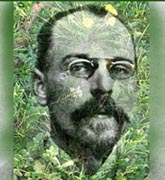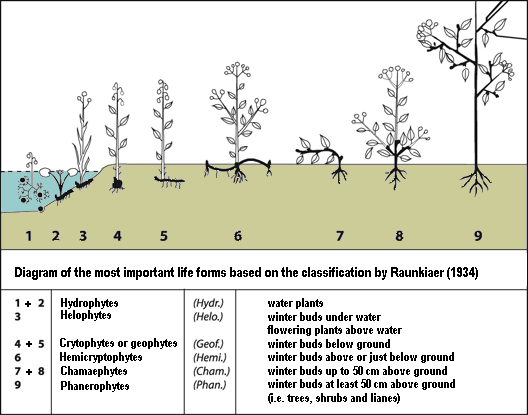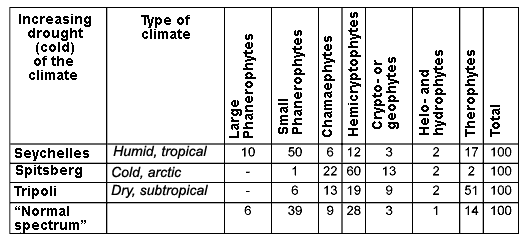Life forms |
|||||
 Raunkiær (1934) has classified plants according to the place where the growth point is located during the less favorable seasons, provided the plant maintains the capability to survive these difficult conditions (see list and figure here below). Depending on the place on earth, this unfavorable period can be for example in the cold winter period or in the dry summer time. In our regions the growth point in the unfavorable season correspond mostly to winter buds. The following ordering can be distinguished:
By determining which contribution the various life forms have to the flora of a certain region, one can obtain an ecologicalspectrum or lifeforms spectrum which reflects a certain relationship with the climate of an area (see table here below). Noticeable is the largecontribution of trees and shrubs (phanerophytes) in the tropics. In the cold arctic climate phanerophytes are almost absent, while the proportion of plants with buds just above ground, at the surface or in the soil is large (95 % Cham+Hemi+Geo). In the dry subtropical climate (desert, arid areas) the annuals (Therophytes) occupy a large place in the vegetation.
It is important, however, to realize that many of the current vegetations are not in a climax-stage. Man has had a strong influence on the composition of many biotopes. Yet, Raunkiær' system has provided a tool to think about an essential, so far unresolved question: how does it come that in very different flora region plants occur with a quite predictable spectrum in life forms? Reference: Raunkiær (1934) The Life Forms of Plants and Statistical Plant Geography.Oxford University Press. |
|||||

